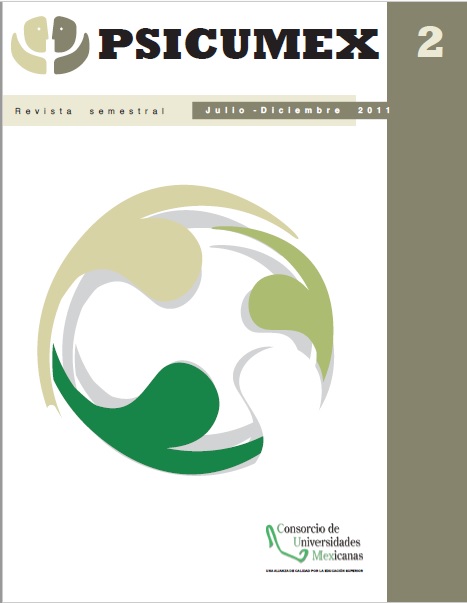Abstract
Based upon antecedents showing that a negative housing habitability propitiates inter-partner violence as well as child maltreatment, we aimed at studying the processes that are opposite to family violence and a bad habitability. This study investigated the possible influence of adequate housing habitability on the positive functioning of Mexican families. Two-hundred-and-five inhabit- ants from a northern Mexican city responded to an instrument assessing the two above-mentioned variables. The assessed habitability conditions included noise control, pleasant temperature, a lack of overcrowding, appropriate illumination, depth, and privacy. In turn, positive family func- tioning considered situations such as family support, family members’ communication, democratic decision-making, flexibility, display of affection, acceptance and respect of everybody’s opinions, among others. A structural equations model revealed a significant correlation between housing habitability and positive family functioning, which suggests that the physical conditions of a house could shape important elements stimulating a healthy interaction among family members, as well as their well-being.
References
Amar, J. (1994). La educación infantil y desarrollo social. Barranquilla, Colombia: Ediciones Uninorte.
Aragonés, J.I. & Amérigo, M. (2010). Psicología ambiental. Aspectos conceptuales y metodológicos. En J.I. Aragonés y M. Amérigo (coords.). Psicología Ambiental. Madrid: Editorial Pirámide.
Bentler, P.M. (2006). EQS, Structural Equations Program Manual. Encino, CA: Statistical Software, Inc.
Corral, V., Barrón, M., Cuén, A. y Tapia, C. (2011). Habitabilidad de la vivienda, estrés y violencia familiar. Psyecology, 2, 3-14.
Corral, V., Frías, M. & González, D. (2010). Environmental factors in housing habitability as determinants of family violence. En M. Frías & V. Corral (eds.). Biopsychosocial Perspectives on Interpersonal Violence. New York: Nova.
Harner, L. (1982). Talking about the past and the future. In, W. J. Friedman (ed.). The Development of the Psychology of Time. New York: Academic Press.
Herrenkohl, T. & Herrenkohl, R. (2007). Examining the Overlap and Prediction of Multiple Forms of Child Maltreatment, Stressors, and Socioeconomic Status: A Longitudinal Analysis of Youth Outcomes. Journal of Family Violence, 22, 553-562.
Hillier, B. & Hanson J. (1988). The social logic of space. Cambridge: Cambridge University Press.
Holman, E. & Stokols (1994). The environmental psychology of child sexual abuse. The Journal of Environmental Psychology, 14, 237-252.
Hombrados, M.I. (2010). Hacinamiento. En J.I. Aragonés y M. Amérigo (coords.). Psicología Ambiental. Madrid: Editorial Pirámide.
Landázuri, A. & Mercado, S. (2004). Algunos factores físicos y psicológicos relacionados con la habitabilidad interna de la vivienda. Medio Ambiente y Comportamiento Humano, 5, 89- 113.
Levi y Anderson L. (1980). La tensión psicosocial. Población- Ambiente y calidad de vida. México: El manual moderno.
Mercado, S.J. (1998). La vivienda: Una perspectiva psicológica. En J. Guevara, A. M. Landázuri y A. Terán (coords.). Estudios de Psicología Ambiental en América Latina (pp. 141-153). México: BUAP-UNAM-CONACyT.
Montemayor, R. (1982). The relationship between parent- adolescent conflict and the amount of time adolescents spend alone and with parents and peers. Child Development, 53, 1512-1519.
Noller, P., Seth-Smith, M., Bouma, R. & Schweitzer, R. (1992). Parent and adolescent perceptions of family functioning: A comparison of clinic and non-clinic families. Journal of family and Adolescence, 15, 101-114.
Piaget, J. (1969). The Child’s Conception of Time. Londres: Routledge & Kegan Paul.
Richardson, R.A., Abramowitz, R.H., Asp, C.E. & Petersen, A.C. (1986). Parent-child relationships in early adolescence: Effects of family structure. Journal of Marriage and Family, 48, 805- 811.
Rueda, S. (2004). Habitabilidad y calidad de vida. Cuadernos de investigación Urbana, 42, 29-34.
Ruiz, M., Ropero, C., Amor, J. & Amarís, M. (2003). Familia con violencia conyugal y su relación con la formación del autoconcepto. Psicología desde el Caribe, 11, 1-23.
Santoyo, C. & Anguera, M.T. (1992). El hacinamiento como contexto: estrategias metodológicas para su análisis. Psicothema, 4, 551-569.
Valera, S. y Vidal, T. (2010). Privacidad y territorialidad. En J.I. Aragonés y M. Amérigo (coords.). Psicología Ambiental. Madrid: Editorial Pirámide.
Zubrick, S., Williams, A. & Silburn, S. (2000). Indicators of social and family functioning. Canberra, Australia: Department of Family and Community Services.

This work is licensed under a Creative Commons Attribution-NonCommercial-NoDerivatives 4.0 International License.
Copyright (c) 2011

